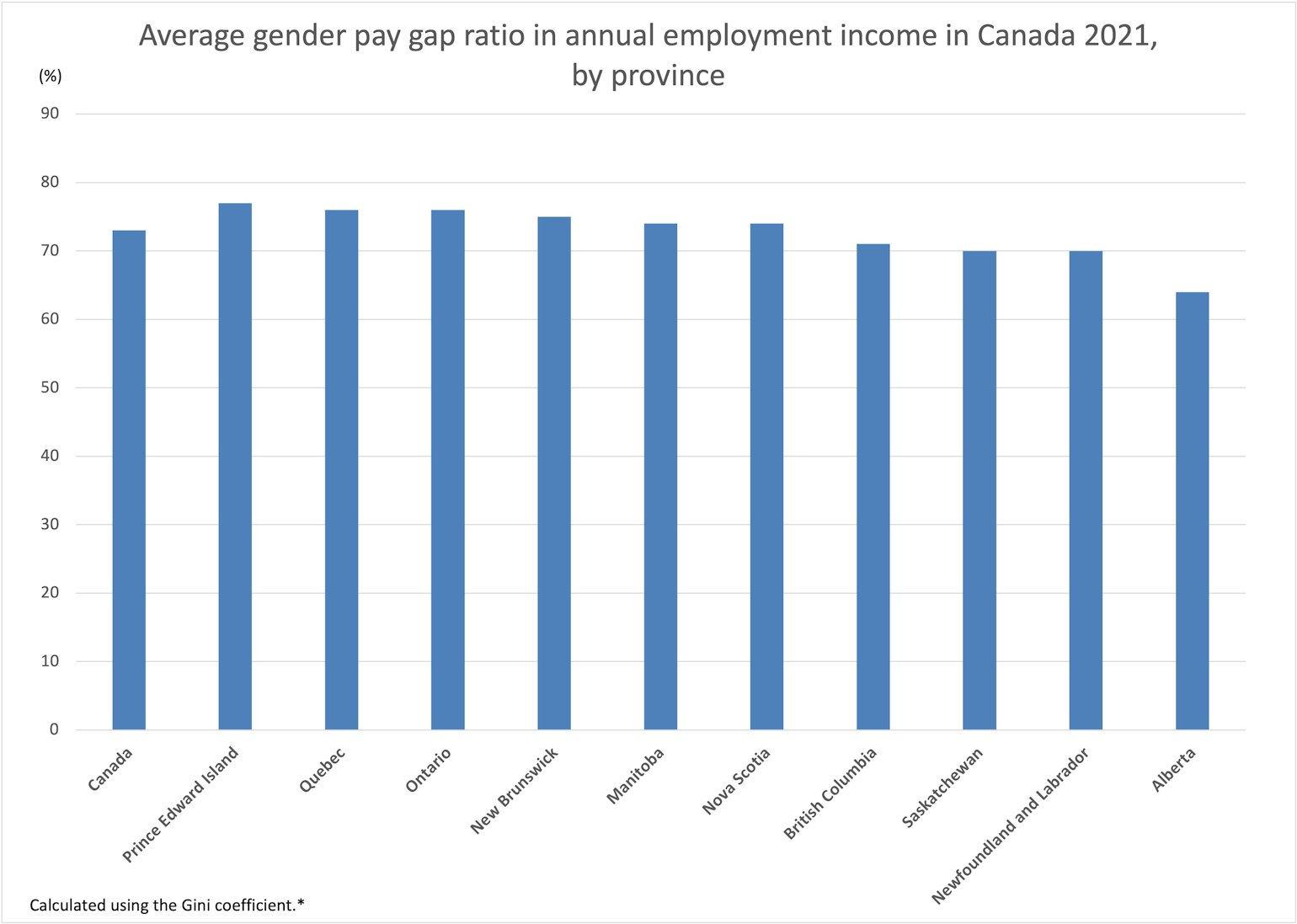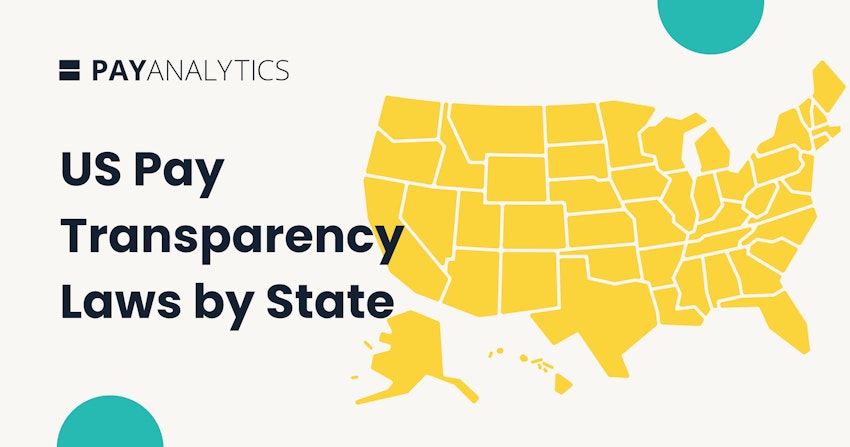Pay equity and pay transparency in Canada: The gist

This article is a big-picture guide to help you navigate the changing landscape of pay equity laws and pay transparency laws in Canada. It gives an overview of both the federal and the provincial legislation that may apply to your organization.
An evolving legislative landscape
Pay equity and pay transparency laws in Canada have evolved a lot in the last fifty years. The framework we know today is based on the Canadian Human Rights Act, the first federal anti-discrimination law in Canada, passed in 1977, which gave some recourse for pay discrimination.
However, the Act was based on complaints, so it put the onus on employees to report pay discrimination rather than on employers to proactively prevent it. In the late 2010s, the government began to develop legislation that would move pay equity in a new direction and eventually supersede the Human Rights Act. This resulted in the Pay Equity Act, which was passed in 2018 and came into effect in 2021. It established a proactive approach to pay equity rather than one based on complaints from employees. The responsibility is now on the employers.
What are the Act's limitations and why do provinces have unique legislation?
One limitation of the federal regulations—both the Pay Equity Act and the preceding Human Rights Act—is that they were written to apply to only federally regulated industries in Canada. (This includes banking, communications, and transportation companies as well as government departments and institutions.) So some provinces (like Ontario and Québec) created legislation that applies to public sector employers as well.
Provinces have also identified other ways to reduce pay discrimination and pay inequality. Some implemented or developed their own specific pay equity laws. Others broadened their focus to pay transparency.
The figure below shows the (unadjusted) gender pay gap ratio by province. Nationwide and on average, there is a substantial pay gap in Canada: female employees only make 73% of what male employees make.

Statistics Canada, 2021. Graphic created by PayAnalytics.
Ready to learn how PayAnalytics can help? Book a complimentary 1:1 with one of our pay equity specialists.
Pay equity laws in Canada: An overview of provincial and federal legislation
Federal Pay Equity Act
Who does the Canadian Federal Pay Equity Act apply to?
Canada’s federal Pay Equity Act applies to federally regulated employers with 10 or more employees, including:
- Federally regulated industries (like banks, transportation companies, infrastructure, postal/courier companies, and communications companies)
- Public sector workplaces (like government offices)
- Parliamentary institutions (like the House of Commons)
What does Canada’s Pay Equity Act require?
Under the Act, covered employers are required to conduct periodic evaluations for pay inequality in jobs commonly held by women. In other words, these organizations need to actively examine their pay practices to ensure that there is comparable pay for work of equal value across genders. This involves comparing traditionally female-dominated job roles (customer service, for example) to traditionally male-dominated ones (like maintenance).
Employers of a certain size are required to form a pay equity committee, and all covered employers must develop a pay equity plan. This plan involves:
- Identifying job classes within the organization and figuring out the gender predominance of each class
- Determining the value of each job class (based on, for example, working conditions, difficulty, responsibility, and required skill)
- Calculating the compensation of each job class
- Comparing the compensation of male-dominated and female-dominated job classes of similar value
- Figuring out what, if any, adjustments need to be made to the pay structure to ensure male-dominated and female-dominated job classes of similar value are compensated similarly
- Publicizing the pay equity plan within the organization
- Reviewing and updating the plan periodically
Pay equity and pay transparency laws at the provincial level in Canada

Alberta
The federal Pay Equity Act applies to covered employers in Alberta, but there are no pay equity or pay transparency laws at the provincial level.
If you're ready to skip ahead, book a complimentary 1:1 here.
British Columbia (BC)
The federal Pay Equity Act applies to covered employers in BC.
In addition, the province has instituted its own Pay Transparency Act, which was passed in May of 2023. Initially, this law will apply only to government employers, but it will incrementally expand to all employers with 1,000 or more employees, then 300 or more employees, then 50 or more employees.
This legislation aims to reduce systemic discrimination in the workplace by:
- Prohibiting employers from asking about job applicants’ salary history
- Prohibiting employers from taking adverse action against employees who ask about their pay or share information about their pay with others
- Requiring public job postings to state a pay range
- Requiring employers to create and publicly share annual pay transparency reports
If you're ready to skip ahead, book a complimentary 1:1 here.
Manitoba
The federal Pay Equity Act applies to covered employers in Manitoba. The province also has its own Pay Equity Act that applies only to the public sector. This legislation mandates wage parity across genders between employees with functions "of equal or similar worth.” It also addresses negotiations with public sector employee unions.
A provincial Pay Transparency Act is in the works for Manitoba. As of early November 2023, a draft of this law has been introduced to the legislature twice, but it has yet to be passed.
If you're ready to skip ahead, book a complimentary 1:1 here.
New Brunswick
The federal Pay Equity Act applies to covered employers in New Brunswick. Similar to Manitoba, New Brunswick has its own Pay Equity Act that stipulates equal pay for equal work in the public sector. This legislation took effect in 2010.
New Brunswick does not currently have any provincial pay transparency laws.
If you're ready to skip ahead, book a complimentary 1:1 here.
Newfoundland and Labrador
The federal Pay Equity Act applies to covered employers in Newfoundland and Labrador. The provincial government has also developed its own pay equity and pay transparency legislation, ratified in October 2022.
The pay equity component of this law will apply to public sector employers. Specific requirements are still under development, but will likely involve job valuation and reporting.
The pay transparency aspect of this bill applies to both public and private sectors. The specifics are also still under development but will likely tackle pay discrimination by:
- Prohibiting employers from asking about job applicants’ salary history
- Requiring a stated pay range in all public job postings
If you're ready to skip ahead, book a complimentary 1:1 here.
Nova Scotia
The federal Pay Equity Act applies to covered employers in Nova Scotia. The province also passed its own Pay Equity Act way back in 1988. This law mandates equal pay in the public sector only.
At around the same time, the province implemented its Labour Standards Code, which addresses pay transparency. The key actions of this legislation are:
- Prohibiting employers from asking about job applicants’ salary history (with some exceptions)
- Protecting the right of employees to talk about their pay with others
Note that in Nova Scotia, the pay transparency regulations do not mandate pay ranges in public job postings.
If you're ready to skip ahead, book a complimentary 1:1 here.
Ontario
The federal Pay Equity Act applies to covered employers in Ontario. To move closer to ensuring work of equal pay for work of equal value throughout its workforce, Ontario has also passed its own pay equity legislation. These measures extend equal pay for equal work requirements to private sector employers.
In addition, Ontario’s Pay Transparency Act was passed in 2018 but has not yet taken effect. This law will eventually:
- Prohibit employers from asking about job applicants’ salary history
- Require some employers to report demographic pay gaps, including gender pay gaps
- Require a stated pay rate or range in all public job postings
If you're ready to skip ahead, book a complimentary 1:1 here.
Prince Edward Island (PEI)
The federal Pay Equity Act applies to covered employers in PEI. Similar to Nova Scotia, PEI made moves to combat pay inequity in the late 1980s. However, its provincial Pay Equity Act applies to private sector employers as well as public sector. This legislation:
- Requires equal pay for jobs of similar value
- Requires organizations to identify and remediate any gender-based pay disparities
- Provides channels of recourse for employees with pay inequity concerns
In 2021, PEI passed provincial pay transparency legislation in the form of amendments to its Employment Standards Act. This legislation:
- Prohibits employers from asking about job applicants’ salary history
- Requires the anticipated pay in all public job postings
- Protects the right of employees to talk about their pay with others
If you're ready to skip ahead, book a complimentary 1:1 here.
Québec
The federal Pay Equity Act applies to covered employers in Québec. The province also implemented its own Pay Equity Act in 1996, which extended pay equity requirements to both public and private sector employers with 10 or more employees. Due to an initial lack of compliance, the provincial government strengthened this legislation in 2009. It now requires employers to:
- Conduct an initial pay equity assessment, display results publicly, and re-evaluate every five years
- Increase salaries of underpaid female-dominated job roles if discrepancies are found
- File an annual report and also monitor/report significant company events that may affect pay
Québec does not currently have any province-specific pay transparency laws.
If you're ready to skip ahead, book a complimentary 1:1 here.
Saskatchewan
The federal Pay Equity Act applies to covered employers in Saskatchewan, but there are no pay equity or pay transparency laws at the provincial level.
If you're ready to skip ahead, book a complimentary 1:1 here.
Northwest Territories, Nunavut, and Yukon
Canada’s federal Pay Equity Act actually does not apply in the Northwest Territories, Nunavut, or the Yukon. These territories also do not currently have their own pay transparency legislation.
If you're ready to skip ahead, book a complimentary 1:1 here.
How PayAnalytics can help Canadian companies
As we’ve seen, pay equity requirements and pay transparency requirements in Canada vary greatly among the nation’s provinces and territories. Fortunately, PayAnalytics is a holistic solution that provides powerful, customizable tools that can help you satisfy all the applicable federal and local requirements.
Our job evaluation feature is designed to help you set a value for all of your job classes by applying objective, gender-neutral criteria. You can use PayAnalytics’ compensation mapping to compare your employees’ pay. If you do find any pay disparities, this feature also calculates corrective raises that are as budget-friendly as possible.
We also maintain a growing library of written resources, like our local requirements page, which outlines legislation in Canada and around the world. You might also want to keep an eye out for news about our upcoming e-book, which will go into a little more depth on Canada’s federal and local pay equity and pay transparency laws.
In the meantime, you can book a 1:1 with one of our pay equity specialists to get started on your journey toward pay equity and pay transparency.
The information on this page is not intended to serve and does not serve as legal advice. All of the content, information, and material in this article are only for general informational use. Readers are advised that this information, legal or otherwise, may not be up-to-date.





